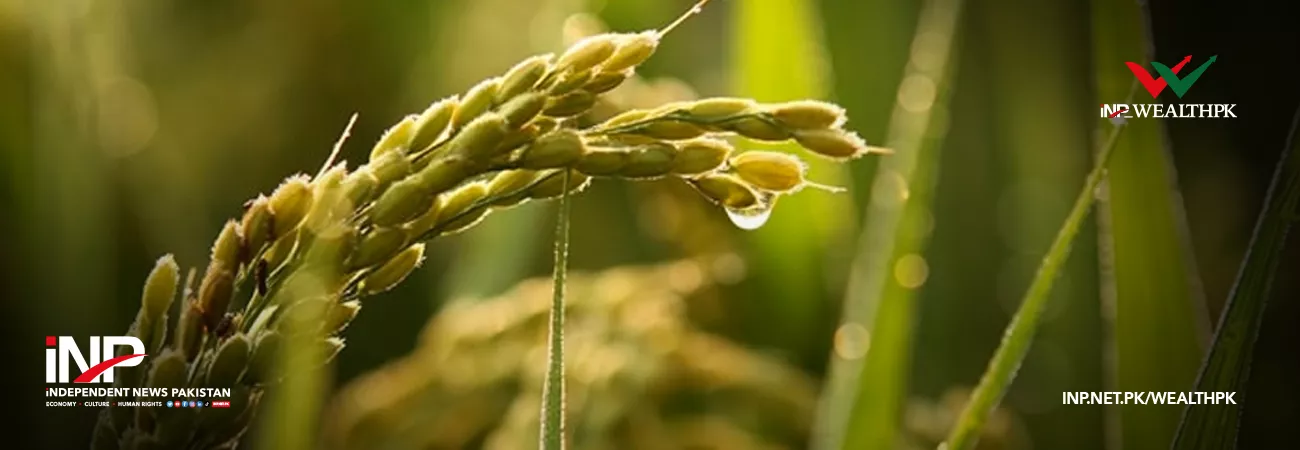INP-WealthPk
The morphological evaluation of green super rice (GSR) for yield and yield-related traits under Pakistan’s agroecological conditions can help increase the production efficiency of the crop to a desired level within a short period of time, WealthPK reports. Rice is the second most important crop in Pakistan after wheat. However, its production is not optimal. The increase in the yield of rice will have a positive impact on the overall economy of the country. Dr Zaheer Abbas, a senior scientific officer at the National Agriculture Research Centre, told WealthPK GSR was introduced in Pakistan to produce high-yielding climate-resilient cultivars.
As a result, the morphological evaluation of 552 GSR lines was carried out under agro-ecological conditions in Pakistan to develop high-yielding and climate-resilient rice cultivars. “Rice is an important food commodity as well as a cash crop of Pakistan. After wheat, rice is the second main staple food crop and the second major exportable commodity,” he said. Dr Zaheer said that rice production in Pakistan in the year 2020-21 was 8.42 million metric tonnes. He said that in Pakistan, the ninth largest rice-producing country, rice production accounts for 3.0% of the value added of the agricultural sector and contributes 0.6% to the Gross Domestic Product.
“The Pakistani rice market accounts for more than 8% of the total world rice trade. Pakistan dominates the Asian rice market after Thailand, Vietnam and India. Sindh and Punjab are the largest rice-producing provinces of Pakistan where millions of farmers cultivate rice. About 90% of the total rice is produced in Sindh and Punjab,” said Dr Zaheer. Presently, Pakistan’s statistics on rice output are heavily influenced by climate fluctuations. Major constraints affecting rice output include a lack of elite and stable rice cultivars, severe disease and insect pest damage, unequal distribution of water resources, fertiliser management, post-harvest losses and traditional growing techniques.
A lack of adequate water storage facilities and extreme weather conditions cause different glitches in the rice production process, including drought stress. “The conflicts between rice production and environmental resources also become more frequent as a result of floods, temperature increases, droughts and unusual rain. Due to these factors, creating rice cultivars that exhibit green features is now a challenge,” said the expert. He said that the National Institute for Genomics and Advanced Biotechnology (NIGAB) in Islamabad introduced the GSR advanced lines to create rice cultivars that can maintain sustainable production even when grown in Pakistan’s harsh environmental circumstances.
“The green characteristics include high nutrient output potential, tolerance to a variety of biotic and abiotic stresses and fertiliser-water use efficiency. Therefore, the primary objective of boosting rice grain production in Pakistan is to cultivate and breed increased green trait variants in order to raise the productivity of rice cultivars,” Dr Zaheer told WealthPK.
Credit : Independent News Pakistan-WealthPk




